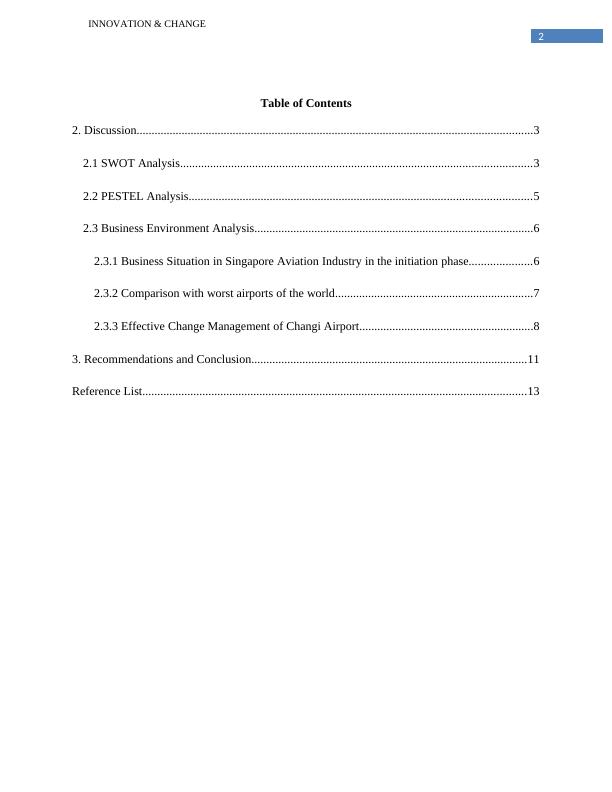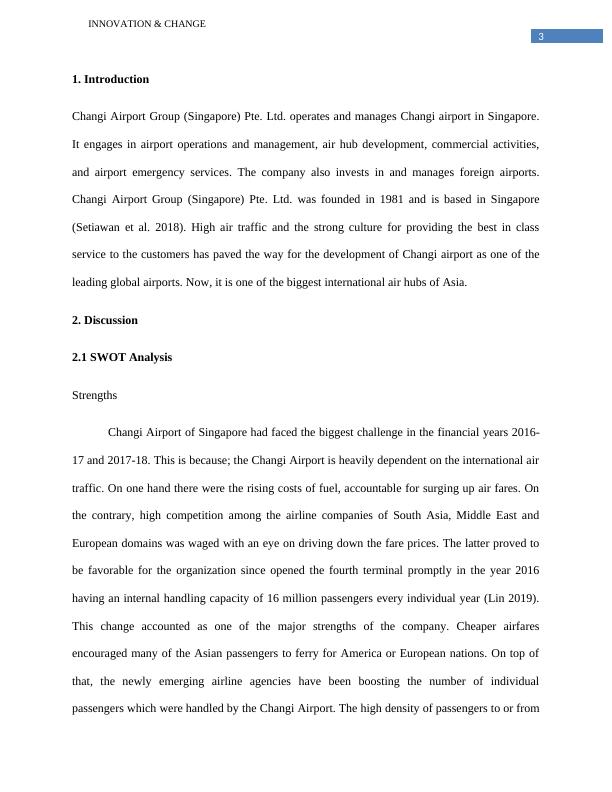Innovation & Change: Business Environment Analysis
17 Pages4444 Words86 Views
Added on 2023-01-23
About This Document
This article discusses the business environment analysis of Changi Airport in Singapore, including SWOT analysis, PESTEL analysis, and comparison with other airports. It also explores the effective change management strategies implemented by Changi Airport.
Innovation & Change: Business Environment Analysis
Added on 2023-01-23
ShareRelated Documents
End of preview
Want to access all the pages? Upload your documents or become a member.
Operations Management (PDF)
|16
|4783
|43
Airport Planning and Management
|7
|1022
|351
Improvement of Changi Airport Group
|14
|3719
|82
Key Markets of Asia Pacific
|11
|1628
|11
Aviation Management at Changi Airport: Competition via Routes and Scheduling
|12
|2446
|87
Aviation Management : Airports
|11
|2837
|33




